
Aspire: Ina’s Tale
Ina was trapped, placed in perpetual slumber inside the Tower – where she dreamed. Suddenly and unknowingly, she is woken. Ina must now explore the Tower’s inner chambers in search of a way out and a reason for her imprisonment.
Along the way, she’ll traverse marvelous scenery, meet enigmatic characters, solve intuitive puzzles, and conquer platforming sequences as she comes closer to her goal - but farther from innocence.
For this isn’t a story about how Ina was saved. This is the story about how she discovered she could be so much more.
EXPLORE A LIVING TOWER

Get lost in a mystical side-scrolling adventure through beautiful sprawling levels, each with their own distinct feel. Every region presents its own peculiarities to unravel.
ENGAGING STORY

Ina’s dreams shape reality while the Tower feeds. Hopes and imagination satiate its hunger. How are the two connected?
MEET THE TOWER DWELLERS
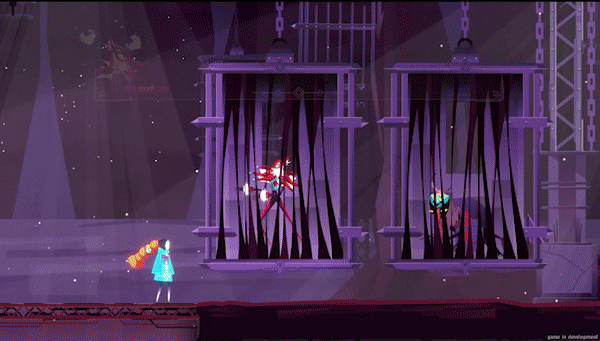
Learn about the other denizens of the Tower as you search for the truth. Uncover their pasts, their memories, and set them free.
CONTROL SPIRITS

Ina was trapped for a reason, and her powers resonate with the spirits that inhabit the Tower. Use them to manipulate objects, solve puzzles, reveal hidden passages, and navigate the environment to find your way out.
Read More: Best Puzzle Platformer Singleplayer Games.

The Bridge
The Bridge is a 2D puzzle game with beautiful Escher-like architecture and level design, hand-drawn black-and-white art and its own laws of physics. It is divided into 48 levels with the first half requiring minimal use of logic and feeling like somewhat of a pushover; fortunately, this is mostly remedied in the second half—a mirrored version of the first with additional obstacles thrown in and where a greater number of puzzles actually make you think.
The puzzles start off easily enough, with simple gravity manipulation and key collection, then introduce additional elements consistently: deadly balls which roll as you rotate the environment and can adhere to their own laws of gravity; points which invert gravity and shift you between black and white dimensions where you may only interact with objects matching your current color; vortexes which suck anything near them into place and hold them there until deactivated; mirror images of yourself which require entering multiple doors or picking up multiple keys simultaneously to progress; and gravity curtains, where you may remain stationary while rotating the world to work objects into their desired positions relative to your own.
– Real player with 10.7 hrs in game
Read More: Best Puzzle Platformer 2D Games.
Let me start by saying that The Bridge is not a bad game. For an indie game the developers should be proud of what they’ve accomplished. If there were a somewhere-between-thumbs-up-and-thumbs-down button this is the game I would most want to use it for.
I leaned on the side of not recommending it though, for several reasons. This game is inevitably compared to Braid because it has an artsy style, time manipulation, and puzzles. But it’s nowhere near the level of those other puzzle games I love, including Braid or Limbo or even Master Reboot. The reason is mostly depth and story. There simply isn’t that much here. And what does exist is far too obscure and limited to be moving.
– Real player with 10.6 hrs in game

Larger Than Light
Quite a shorty of a indie game, and it does feel a bit like a school project tbf, but nevertheless with its interesting puzzle mechanic that i would have loved to see more of, lit character design (hehe) and some wholesome family bonding i would give a recommend for it.
– Real player with 0.3 hrs in game
Read More: Best Puzzle Platformer Singleplayer Games.

Summertime Madness
Ever dance with the devil in the pale moonlight?
Take control of an artist who is offered a deal to escape the madness of war and live for 6 hours inside his paintings. He has to navigate his creations and reach the end before midnight or be trapped forever.
FULL DISCLAIMER: I was provided a free Steam key by the developer ahead of launch but I had already completed this game by receiving it in the May Humble Choice first. So I won’t be labelling this review as ‘Got this game for free’.
– Real player with 19.5 hrs in game
Summertime Madness appeared to be a game that is just up my alley. It has all of the elements - art, music, and puzzles. It also has an optional timer for achievements. It started out great… figuring out how to get off a boat, turning platforms to build a path. And, then it took a downhill turn for me. The game evolves into a series of mazes and switches in an Escher-like house, a time-warped train station, a series of doors, and (seemingly) endless stairs/paths.
To add insult to injury, I was well on my way to making a successful 6 hour run when I selected the wrong door and my clock advanced to a quick ‘game over.’ Evidently, I was not the only frustrated player because the development team listened and released their 1.2 patch which made these areas less punishing.
– Real player with 16.9 hrs in game

Boris the Sloth
On his quest to save his friend Euka the Koala from an evil mandrake, Boris the Sloth must solve physics-based puzzles while fighting off dangerous animals and traversing challenging terrain.
Faster than your Average Sloth

Move Objects

Warp Time
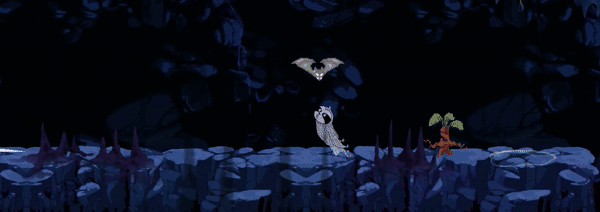
Alter Gravity

Pet the Dog
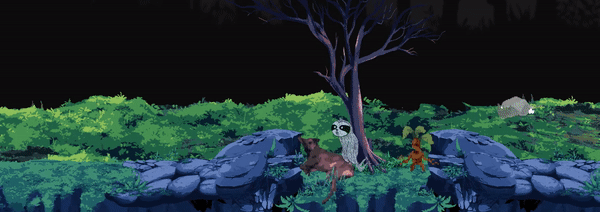
Fight Dangerous Animals with Cunning

Transition to and from the Spirit Realm
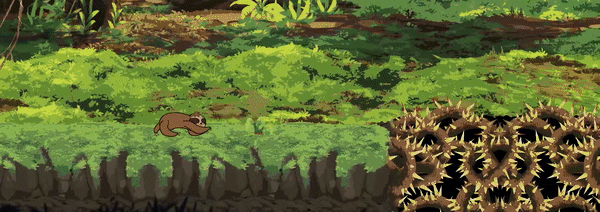
Use your powers in the spirit realm to uproot trees and move objects in order to give yourself a chance to escape and find Euka in the world of the living. But watch out, one missed step and you’ll be stuck as a spirit forever. Luckily, you have a few tricks up your fur and can use your sloth abilities to warp time and alter gravity in order to rescue your friend.
Navigate through jungles, caves, dungeons, and ruins to save Euka and take revenge on the evil mandrakes that have taken over the jungle.

Playhear : Square Paper City

How an Electronic Music Album would sound and look if it was a Video Game?
Welcome to a new way to listen to music with this first opus of Playhear, a series of musical pieces made into games!
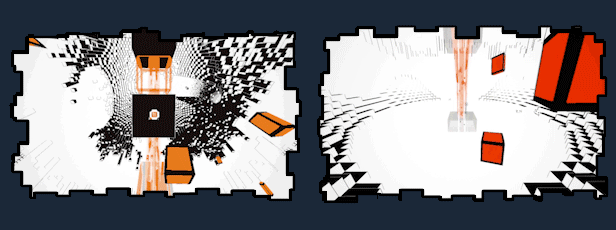
Surreal City
Settled in a weird and minimalistic place, Square Paper City is a Musical Walking Simulator with mazes, some puzzles and a bouncy and dynamic world.
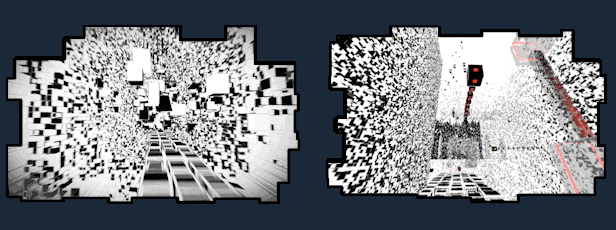

A new way to play a music album
This interactive experience will make you live and feel a music LP as something new: semi-procedural, designed according to the game and the levels, moving and modulating according to your actions. The simplest inputs have dramatic consequences over your musical experience.
There’s also rhythmic totems to test your rhythm abilities, some shooting skills to help you find your way in the monochromatic mazes, some light Parkour, and other fancy mechanics.
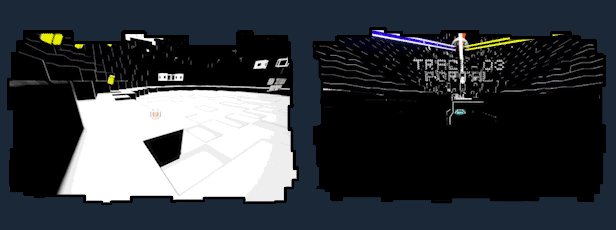
Made with experimentations in mind
I made this game in solo, following my emotions and knowledge, testing visual technologies and interactive audio systems to provide a psychedelic but dynamic and fun walking game in a living painting!

I have also been working closely with some audio plugin developers as a tester and sound designer.
This game is a tribute to them (Unfiltered Audio, Rhizomatic, UVI, Bitwig, Sugar Bytes…) and to experimenters.
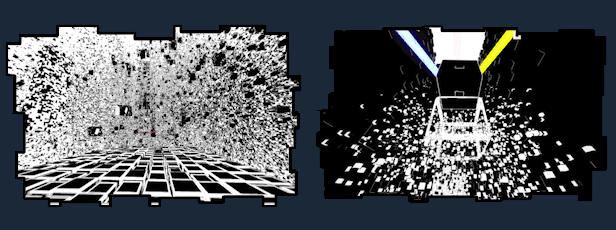

Finally, here’s the

-
Push the Boundaries of the Way we Play/Listen to Music: a technical and artistic approach to interactive music
-
Automatic Writing and Serendipity: a surreal way of composing the story and developing the game content with serendipity.
-
Minimalistic Systems and UI: more immersion for the player. No complexity, immediate onboarding.
-
Synaesthesia: attempt to make a world that lives according to music and visual connections.
-
Focus on Experimental Art and Trippy Mood: I wish to experiment on both the technical art and the interactive music system in order to push the boundaries of abstract and artistic games.
-
Diversity in electronic music genres: as I always done in my musical career
-
This Game is an Instrument as Much as it is an Art Piece: give the opportunity to the player to play the game as an album or live show during a party or whatever.
-
Use a Limited Range of Instruments: especially those that I’m testing for audio developers friends and a few others that I really need for the overall quality of the music
A game made by Tomavatars

Four Sided Fantasy
This is a platform puzzler with a unique twist. The 4 edges of the screen can be ‘wrapped’ so that your character disappears off one edge and appears on the opposite side, then you let go of the ‘lock’ for the character to continue along the path you’ve set.
The main thing I have to say about this game is that it’s very disorienting and strange (in a good way). I completed the game and I can honestly say that I never reached the point where I properly understood what I was doing. Even towards the end I was still using trial and error sometimes. Maybe if I do this, that or the other it might work…
– Real player with 6.5 hrs in game
Preface: Is the game necessarily bad? No. However, because of the Yes/No only on Steam, I cannot fully give it a recommendation for everyone to play. There are still flaws to it as seen below.
The idea of Four Sided Fantasy is somewhat original, at least in the fact that games have not frequently used the wrap-around screen as an actual puzzle itself. The controls of the game are simple: You move. You jump. You lock the screen in place. By locking the screen in place, you can walk to an edge of the screen and wrap around to the opposite side (this applies to both left/right and top/bottom).
– Real player with 3.8 hrs in game

Mirror Land
WHAT IS THIS
Mirror Land is an original game that focuses on optical illusion puzzles. It is inspired by some Magic Mirror Concepts such as FengYueBaoJian in Dream of the Red Chamber and The Mirror of Erised in Harry Potter. It uses MAGIC MIRROR to GRAB and RELEASE characters and cooperate with moving the MAGIC MIRROR to complete incredible space puzzles.
According to THE MIRROR CONCEPT, a series of gameplay and stories are created. Meanwhile, this game uses poetry-writing methods as a source of reference, which makes the game more interesting and creates a poetic atmosphere in it.
**For closer eye movement and deeper puzzle layout, the puzzles of this game are specially developed for vertical screens. If the player’s display can be rotated to vertical, as long as the windows desktop is set to vertical. Then open the game, the game will be full screen. Or, if the display cannot be rotated or you don’t want to bother, players can just use the normal horizontal screen mode. The game experience will not be different, and the areas on the left and right sides of the screen will be filled with black. **
HOW TO PLAY
You can learn how to play from the demo video or read the tips below.
0.The MIRROR and The Feet of the character have an interactive relationship.
1.When you can see The Feet of the character in the MIRROR, press the MIRROR Button, thus the character is tied to the MIRROR surface and turns into 2D form.
2.When the MIRROR is moved, the terrain reflected in the MIRROR is changed.
3.When the 2D form character’s feet meet an empty foothold reflected by MIRROR, press the MIRROR Button again, thus the character is released to the corresponding terrain.
MECHANISM
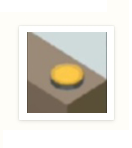
Pedal Trigger can make the terrain or other things change.

THRUST DEVICE When the character moves to the front of the THRUST DEVICE, this device will do a powerful thrust and push the character out for a certain distance. During this process, the
character is not affected by gravity.
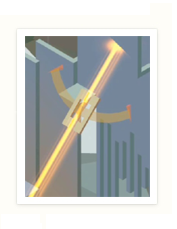
CLUSTER LIGHT
When the source of The CLUSTER LIGHT is turned on, there will be a beam of The CLUSTER LIGHT. It can be reflected by a MIRROR. You can make the LIGHT travel to different positions by adjusting the angle of light emission as well as the angle and position of the mirror.
1.The CLUSTER LIGHT can pass through transparent terrain.
2.When the CLUSTER LIGHT reaches a FLAT place whether it is transparent or not, a TELEPORT POINT of LIGHT can be etched at the irradiation point.
3.LUMEN STONE CAT can travel in CLUSTER LIGHT-TELEPORT POINT System
NPCs

LUMEN STONE CAT is a passenger of the CLUSTER LIGHT. It is a mysterious animal imprisoned in the LUMEN STONE. When it is not exposed to the CLUSTER LIGHT, it looks like a dull square stone that is almost as tall as the character. In this case, It can be dragged and moved on a flat place, helping characters reach different terrain. But when THE CAT is moved to a teleport point of the CLUSTER LIGHT, which connects with another teleport point by CLUSTER LIGHT, THE CAT will transform into a cat that can swim in the LIGHT. After it reaches the teleport point as far as it can, THE CAT will transform into stone-form again.

The SILENCE is such a STABLE being that no character can push it away. When it blocks a character’s way, the character can only walk away and wait for it to go to the next position, or catch it and put it in the MIRROR.

The STRENGTH In most cases, the STRENGTH will push away every movable object that gets into its reach. How far it pushes an object depends on the size of STRENGTH. During the pushing process, the STRENGTH and the object are not affected by gravity.
What The STRENGTH can push away: the character, the cubes, and smaller STRENGTHs
What The STRENGTH can not push away: THE SILENCE, THE LIGHT FLOWING STONE CAT, and solid terrains.
When the STRENGTH pushes the objects beyond its ability, it will be pushed away by the reaction force.
The STRENGTH can also be caught and put in the MIRROR.
CHESSBOARD OF THE MIRROR MECHANISM

1.When the character is caught and put on the CHESSBOARD OF THE MIRROR, he will become a chess piece that can move to the adjacent chessboard grid.
2.Each chessboard grid has a corresponding relationship with a certain foothold out of the MIRROR. When the MIRROR releases the character, the character will be placed in the corresponding position.
THE STORY OF MIRROR LAND
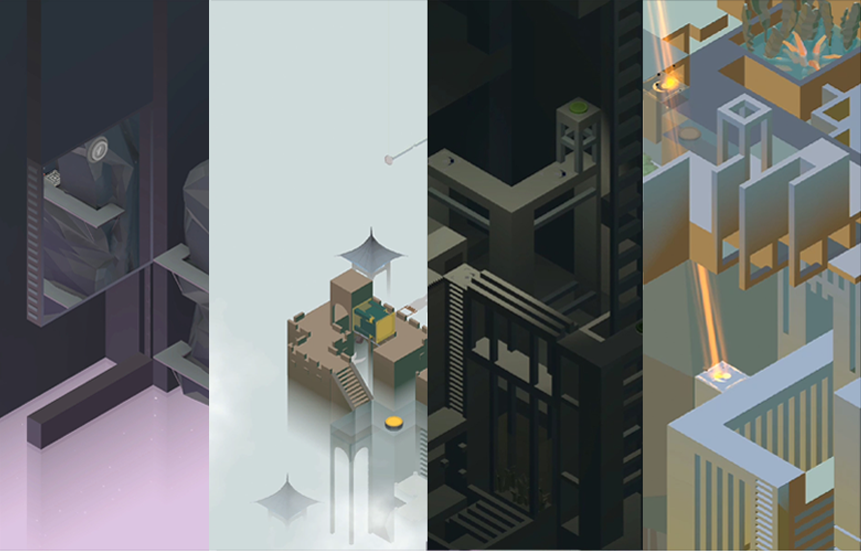
There is a continent in the darkness where the sun, the moon, and stars do not exist. The LIGHT is stored in a big mountain like gel. The mountain is called LUMEN.
Living creatures near the LUMEN gradually evolve into humans. They learn the methods of mining and using the LIGHT. They pipe the LIGHT to high places, illuminating most places. Technology and civilization are developing. Kingdom has formed.
Not far from the west of the LUMEN is the MIRROR PLAIN where the supply of MIRRORS is inexhaustible. Once the last piece of MIRROR PLAIN was exploited, an earth movement will come. A new MIRROR PLAIN will raise.
These MIRRORS can catch living creatures and put them into the surface of MIRRORS. This is discovered by accident.
One of the believable legends is about a hunter. Once upon a time, he was chasing the LUMEN BEAST. This BEAST escaped to a mirror. The hunter prayed subconsciously that someone could help him catch it. Unexpectedly, THE MIRROR responded to his prayer and caught the BEAST.
Later, people found a way to make MAGIC MIRRORS between witchcraft and technology.
THE STORY OF XIU(the character)
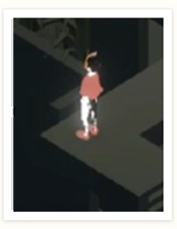
XIU’s ancestors are INKMEN,XIU is a inkman as well. INKMEN is one of the results of human genetic modification.
After humans learned to make MAGIC MIRRORS, some clever bad guys commit crimes with MAGIC MIRRORS they make, and leave no trace of themselves. The ruler of the kingdom decides to keep all the clever guys under supervision. Every movement of them has to leave a trace behind. So the clever ones become INKMEN. Ink always seep out through their skin, and their shoes cannot be waterproof. So the footprints they leave are all ink-like.
XIU’s mother was a TRAFFIC MIRROR ENGINEER. In a TRAFFIC MIRROR test 7 years ago, when the MIRROR released her, she disappeared. This strange thing made people panic, but no reason was found.
Now XIU is fifteen years old, inherited mother’s relics.XIU found 7 SPECIAL STONES among them. One day, a mysterious voice came into XIU’s ears, saying,” Take THESE STONES to the FURNACES I designate. Then forge them into a HAMMER according to the drawings I give you. Use the HAMMER to smash the one-thousand-year-old MIRROR hanging in the capital. And you can find your mother…”
“As long as there is a chance of finding my mother, I will try it…”

Transpose
A challenging and rewarding VR puzzler, this is a beautiful game that runs on the Vive as well as the Pimax 5k+ with no issues. It allows smooth (controller-based) locomotion as well as teleport.
I’d compare it with the Talos Principle and Portal (but without the narrative) in that each puzzle exists as a separate room that you must move around in to complete a physical task. Each room is a large 3 dimensional space where you play with switches to change the direction of gravity, move platforms, etc. The main challenge is the time switching and interacting with past versions of yourself. There are 4 main sections with a different theme and each has around 10 puzzles. As a whole, everything feels connected and not a just a jumble of random puzzles. The puzzles are quite varied in complexity and often can be solved in more than one way. Some are pretty straight forwards while others took me multiple attempts and sometimes required you to think outside the box. It never felt repetitive and it took me 27 hours to beat the game.
– Real player with 27.8 hrs in game
I just finished playing through the whole game. As someone who prefers VR platforming and puzzle games rather than shooters, I enjoyed the experience for the most part, and would say this as a pretty good game with some flaws. I would have happily paid for it, and recommend it to anyone who enjoys room scale VR and problem solving.
The good
The game is designed around a time manipulation and replay premise, like you might have seen in Braid or The Talos Principle. Each level contains one or more starting locations and one or more slots in which you want to insert cubes. You pick a starting point, step out of it, do stuff, and then choose to either keep or discard your run. Kept runs all play in parallel, so you can do such things as throw cubes to your future self, or steal them from your past self, as well as manipulate platforms for your other selves. Later, different simultaneous gravity orientations are introduced depending on the starting location. These puzzle elements work well together and the levels are creative and interesting.
– Real player with 12.2 hrs in game

Closure
Closure is a solid puzzle-platformer, hampered only slightly by its limited scope but aided by gorgeously stark visuals and moody score.
You play as a weird little spider thing that puts on masks of people’s faces and traverses their memories (I assume, as there’s no spoken dialogue). Platforms are only solid when a light source is illuminating them, and you manipulate a variety of these to create or remove terrain so you can reach the exit door in each stage. The mechanic is consistent, buta llittle finnicky – terrain partially lit by orbs tends to create sloped edges or free-floating pixels of floor, which combined with slippery controls will kill you a few times. The most frustrating moments come from falling through a floor or wall after painstakingly setting up platforms in a 1-2 minute stage, because you weren’t quite precise enough. But engine quirks come with the territory in indie platformers, so it’s easily overlooked.
– Real player with 91.8 hrs in game
If I can’t see it, it doesn’t exist. This is pretty much the premise of the game and it is executed to very good effect. Closure is a puzzle platformer in which you are a weird little creature with no face, running about in the dark, and clinging desperately to the light so you don’t fall off into nothingness while you try to map out each level and locate the exit. Oh and then you steal some people’s faces or something and solve light based puzzles in their bodies or whatever.
The puzzles themselves are pretty clever. In each new zone you start out with some pretty simple puzzles which gradually introduce new elements to you, but towards the end of the zone you’re having to work out some pretty complicated stuff. The way these puzzles work is that walls and floors do not exist in the dark, so you have to position lamps and orbs of light about the place to let you do stuff like pass through a wall and not fall through the floor into the abyss, or maybe ride a spotlight up a wall to the exit. It’s a bit weird at first really, but definitely an innovative twist on the standard puzzle platformer. One thing I really like about Closure as a puzzle platformer is that it doesn’t just delight in killing you for no reason (unlike certain other dark puzzle platformers). Every level has a good sense of logic about it that you could probably work out without dying if you were careful and really thought about it; Closure doesn’t resort to tricking you into dying, that’s just not its style. The fact that Closure puts such a weighting on logic rather than trickery or trial and error (though I did have many trial an error moments trying to get my head around some of the harder puzzles) means that every level completed comes with a strong sense of accomplishment, as opposed to other puzzle platformers which only provide the feeling that you’re glad it’s over before you walk into the next ridiculous trap.
– Real player with 17.1 hrs in game